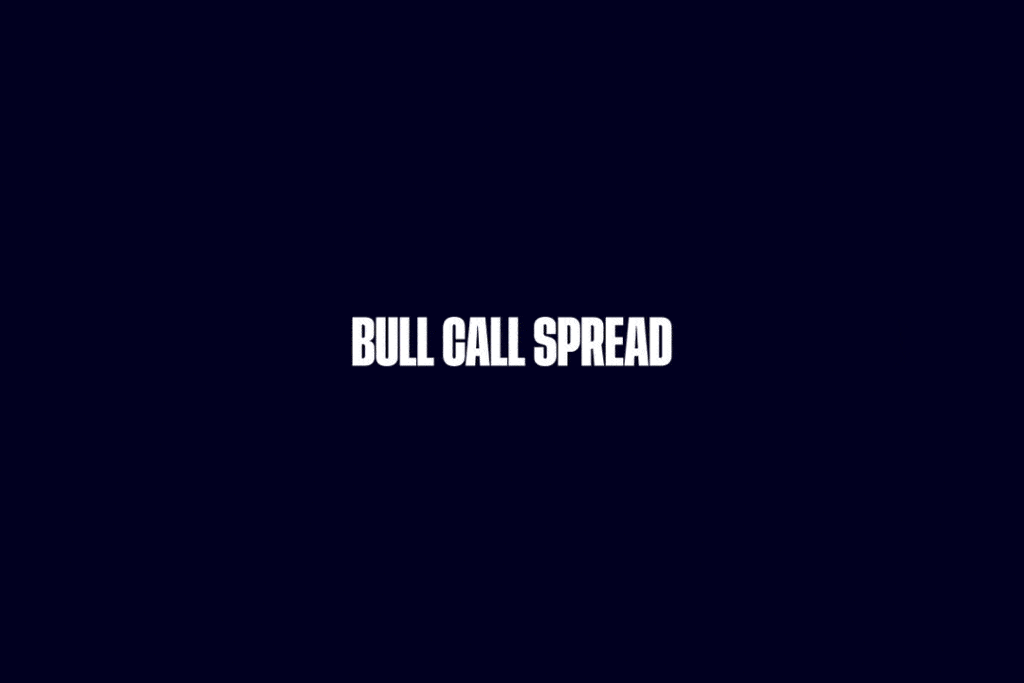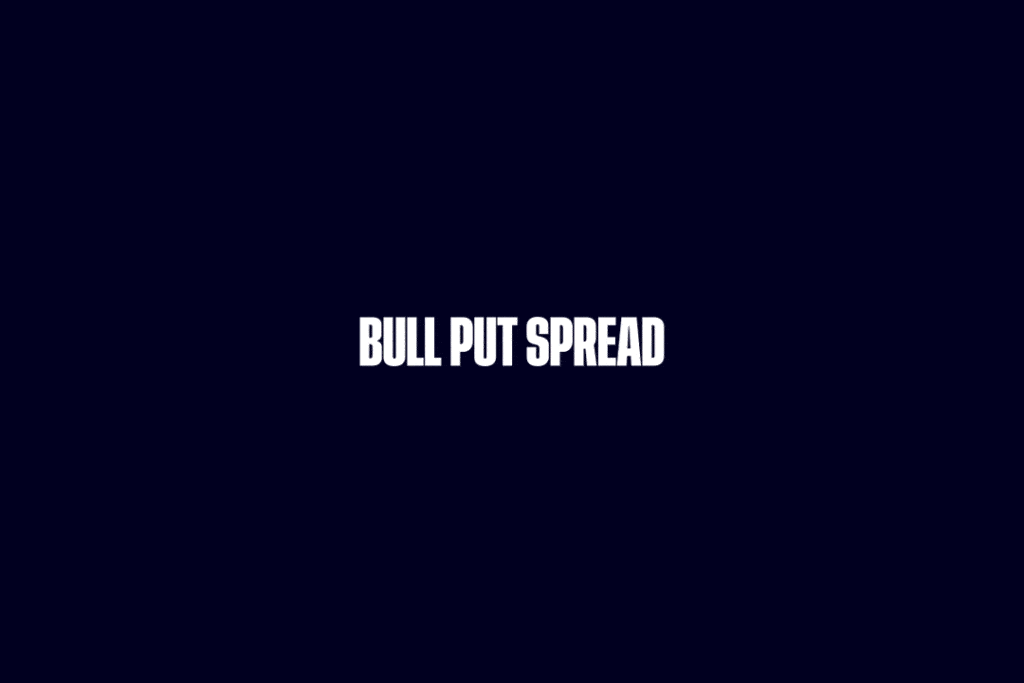Investing using option spreads is a great way to limit the amount of money you are putting at risk, but you’ll also cap your potential profit.
There are many different ways to trade options, depending on the direction you think the market will move. One way is through spreads, which involve simultaneously buying and selling two or more options for the same stock.

What are option spreads
An option spread is an options strategy that involves buying and selling options at different
There are a few different types of option spreads, with a good starting point being vertical spreads. A vertical spread is when the two options involved are of the same type, concern the same underlying asset, and have the same expiry date. So, in our example, there will be spreads that are either both call or put options, involve the same stock, and end at the same time. The main thing to note here is that the two options involved in a vertical spread have different strike prices.
Tip: Options spreads are different from bid/offer spreads which denote the price at which something can be bought and sold.
Types of option spreads
A vertical spread is created when options contracts are bought and sold simultaneously. They can be organized into two categories: Debit and Credit. And, of those, you can either purchase a bull spread or a bear spread (a debit trade), or sell a bull spread or a bear spread (a credit trade).
- Bull spreads: As the name suggests, investors buy this spread if they expect the price of the underlying stock to rise.
- Bear spreads: This options spread strategy is purchased when the analysis suggests that the price of the underlying stock will fall.
- Debit spreads: This involves buying a high-premium option while selling a low-premium option.
- Credit spreads: This involves selling a high-premium option while purchasing a low-premium option, resulting in a credit in your account.
Tip: All option spreads on eToro are debit spreads, which means you’ll pay for them through your funded account.
The main reason you might consider a vertical spread is simple: You have limited loss potential. Because you’re buying one option and selling another, your overall cost is lower. But there’s always a catch. The trade-off is that your profit potential also becomes limited.
This is also why you might want to consider a spread if you don’t think the stock will make a huge move — your profit is limited, but you don’t expect the stock to move all that much anyway, so that might be all you’re looking for.

How option spreads work
Let’s say you wanted to invest in the tech company Cisco Systems, Inc.. Instead of buying the stock directly, you could purchase a call option, which would involve a smaller initial outlay of capital.
But what if you want to risk even less of your money on your options contract? You could turn your investment into a spread (specifically a bull call spread), and sell a different call option for CSCO. Taken together, buying one call and selling another would result in the completion of a spread, with the cost of the more expensive call option you bought being partially offset by the call option you sold.
The maximum loss in a bull call spread is the premium you pay — in this case, the premium of the call you bought, minus the premium of the call you sold.
To calculate the maximum profit you can make from a vertical debit spread, simply multiply the difference between the two strike prices by 100 (remember, options contracts are per 100 shares) and subtract the maximum risk (the difference in premiums). So, to sum up:
- Max loss = Difference in premiums
- Max profit = (Difference in strike prices x 100) – (Difference in premiums)
No matter where the stock ends up, your result will be between these two numbers. Keep these equations in mind as we move into our examples below.
How to choose an option spread
eToro offers two vertical spreads on the platform: bull call and bear put. Let’s start with bull call spreads.
Bull Call Spread
A bull call spread involves two options transactions:
- Buying a call option
- Selling a call option with a higher strike price
When you just buy a call option, you have unlimited profit potential. By selling a call option against your purchased call option, the overall cost of your position is reduced, which means there’s less capital at risk. But, as we mentioned before, the trade-off is that this options strategy has limited profit potential.
You might use this strategy if you are looking to lower the amount of money you put into your investment or if you believe a stock will go up only modestly before the expiry date. If you think the stock is going to go up, but think its upside is limited, a spread can still allow you to benefit from that move while risking less in the cost of the premium.
Let’s go back to that CSCO example — say you think the stock price is going to go up from its current value of $60, but you’re not sure how much it’s going to go up by. A bull call spread would involve buying one option and selling another.
Buy call option in CSCO
Expiry date: 3/21
Strike price: $50
Option cost (premium): $1,000
Sell call option in CSCO
Expiry date: 3/21
Strike price: $70
Option cost (premium): $500
In this example, you’d pay $1,000 for purchasing the $50 call and you would receive $500 from selling the $70 call option. Your total net debit is $500 from this option spread — that’s the price of your spread, and your maximum loss*.
Max loss (the net debit) = $1,000 – $500. This is also the total cost of the spread.
If you use the equation we mentioned in the last section, you can also find your maximum profit.
Max profit = (($70 – $50) x 100) – ($1,000 – $500)
= ($20 x 100) – $500
= $2,000 – $500
= $1,500
Let’s say your
If you had just purchased the first call, your profit would be lower. If you had bought just the second call, you wouldn’t have made any profit. By creating a spread, you have capped both your maximum loss and your maximum profit.


Bear Put Spread
This spread is basically the reverse of the bull call spread and could be used if you think a stock will drop in value in the future:
- Buy a put option
- Sell another put option with a lower strike price
The maximum amount you would plan to lose is the amount you paid for the option. Once again, the maximum profit potential is the spread between the two strike prices minus the premium paid. Let’s say you think CSCO may actually decline from $60 in the future. A bear put spread may look like this:
Buy put option in CSCO
Expiry date: 3/21
Strike price: $70
Option cost (premium): $500
Sell put option in CSCO
Expiry date: 3/21
Strike price: $40
Option cost (premium): $200
In this example, the maximum amount you would lose is $300, or the difference between the two premiums (this is also the price of your spread or the “net debit”)*. The maximum profit would be:
Max profit = (($70 – $40) x 100) – $300
= ($30 x 100) – $300
= $3,000 – $300
= $2,700
If you had just purchased one put in this scenario, your total profit could have been higher. But, you would also be risking a larger investment ($500, as opposed to just $300 with this spread).

Trading spreads on eToro
Want to start trading spreads? The eToro interface is known for its user-friendly functionality.
Once you find a stock that you’re interested in on the eToro app, click “Trade.” There, you’ll have the choice to invest in a spread. Bear in mind you’ll need to get approval to trade spreads via a margin and options agreement (you should be prompted when you select a spread).
Once you pick the type of option that you want, pick the date you expect the option to move by (the expiry date) and the price past which you expect it to move (the strike price). You’ll also be able to view the risk for the options trade, the bid price (current value), daily change in price, and break even point.
Select the number of contracts you’d like to purchase — remember, each contract represents 100 shares — and you’re all set! Once you purchase your spread, you have the option to wait until the expiry date or you can exit the trade ahead of time.
Final thoughts
Option spread trading strategies highlight the diversity and flexibility the instruments can bring to investing. The nuanced approach to risk-return might not be for every investor, but, for many, it offers a way to broaden the scope of their investment activity.
Learn more about option spread strategies by joining the eToro Academy.
Quiz
FAQs
- Why put on trades where the upside is capped?
-
If your analysis suggests that an underlying asset is only likely to experience a modest price move, then, a spread strategy could secure a gain while reducing your potential downside. This ties in with the adage that investors should trade the market they see, rather than the one they want to see.
- Won’t the cost of premiums erase any potential profits?
-
This is quite possibly the case. Options that are further in-the-money tend to have more value and command a higher price. That is why it’s important to carry out a full cost-benefit analysis of any trade you are thinking of putting on.
- What is a horizontal spread strategy?
-
A horizontal spread, sometimes referred to as a calendar spread, is a trading strategy which can be carried out using options or futures. It is where long and short positions in derivatives are simultaneously opened in the same underlying asset and with the same strike prices, but with different expiry dates.
This information is for educational purposes only and should not be taken as investment advice, personal recommendation, or an offer of, or solicitation to, buy or sell any financial instruments.
This material has been prepared without regard to any particular investment objectives or financial situation and has not been prepared in accordance with the legal and regulatory requirements to promote independent research. Not all of the financial instruments and services referred to are offered by eToro and any references to past performance of a financial instrument, index, or a packaged investment product are not, and should not be taken as, a reliable indicator of future results.
eToro makes no representation and assumes no liability as to the accuracy or completeness of the content of this guide. Make sure you understand the risks involved in trading before committing any capital. Never risk more than you are prepared to lose.


